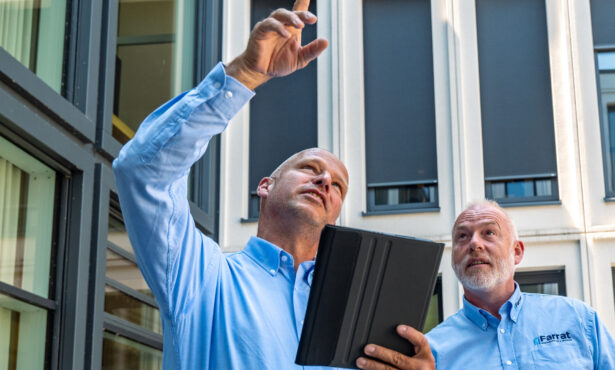The Building Safety Act 2022 is a significant overhaul of the regulatory framework in England and Wales regarding how all buildings are to be designed and constructed, and how higher-risk buildings, specifically high-rise and multiple occupation buildings, are to be managed. The Act enacts the recommendations of the UK Government’s review of the 2017 Grenfell Tower tragedy. It received Royal Assent in April this year and is expected to be rolled out in stages over an 18-month period.
The Act has been created to address what has been identified as a lack of regulatory oversight, as well as establish clarity on roles and responsibilities in the construction and maintenance of this kind of development. As the different stages of this act are rolled out in the coming year or two, everyone involved in these projects – architects, structural engineers, developers, contractors, and consultants – need to take note of how they will be affected.
Key aspects of The Building Safety Act 2022
This document is over 250 pages long and will need expert inspection, but here are some of what we consider to be the key themes within the act.
Rigorous Accountability
A new Building Safety Regulator has been created – under the jurisdiction of the Health and Safety Executive – and they will be responsible for overseeing improvements in the safety of all buildings in general, but most specifically they will be taking charge of enforcing more rigorous management in the building and management of higher-risk buildings.
In a move that relates most closely to the events surrounding the Grenfell Tower tragedy, for all higher-risk buildings there should be an identifiable ‘accountable person’, responsible for ensuring that fire and structural safety is efficiently and properly managed in the building. This accountable person is responsible for assessing the structure and external walls – this includes elements such as balconies, facades, and entrances/exits – and ensuring that general fire precautions are taken to ensure those areas are safe.
A higher-risk building in England and Wales is defined as buildings that are at least eighteen metres tall or at least seven floors, containing two or more Dwellings. In Wales, there are proposals for an even more stringent definition, applying to any building with two or more dwellings regardless of height Scottish Legislation has already gone further with the new Scottish Building Standards prohibiting the use of combustible materials for building envelopes above 11m.
Fire safety has always been important, but never before has there been such a high level of accountability for those responsible for both designing and building developments, and also managing their operation.
Get in touch: Challenge our engineers to ensure the efficiency and safety of your projects. Email us or call +44 161 924 1600 to talk to the team.
More Scrutiny and Regulation
When being built, every development has been subject to the need to meet regulations, but now there will be a series of ‘gateways’ surrounding planning, as work begins, and on completion. These new gateways are designed to boost HSE regulation and ensure that enough scrutiny is given at every stage and not just at the start and/or end.
In addition to this, a ‘New Homes Ombudsman’ scheme has been created to give owners of new build homes the opportunity to seek redress against developers and builders and enable social housing complainants to escalate any related complaints following the usual landlord’s complaints process. This scheme puts more scrutiny on developers and builders as well as landlords, with a more direct route for any perceived shortcomings to be raised and addressed.
Rights to Remediation and Damages
The biggest financial implication long term is the increase in the rights of inhabitants to remediation and damages.
For the first time in building regulations, many qualifying leaseholders are protected under new laws – regardless of when buildings were purchased or built – from bearing the costs of some remediation and building safety work on their building. This means when it comes to work such as replacing flammable materials, the liability is usually on a building’s developers.
For new homes, warranties are to be provided by developers that last 15 years. The new act will also enable individuals to claim damages where they suffer harm because work on a building has not met Building Regulations standards, and this limitation period is also 15 years.
Fire resistant materials and the Building Act 2022
With this update to building regulations deriving specifically from a fire as catastrophic as the Grenfell Tower fire, it was always inevitable that the focus was going to be on fire safety and holding those in charge of designing, building, and managing high-risk buildings such as tower blocks accountable for the safety of the inhabitants.
The new level of accountability, scrutiny, and potential damages as well as a moral obligation to protect human life drives increased demand for fire-resistant materials wherever possible, and not just when it’s meeting the bare minimum to pass regulations.
The use of tested fire-resistant materials means that fires that break out can be contained to the smallest possible area – known as a fire compartment. However, walls, ceilings, floors, and doors within this fire compartment need to be able to withstand being exposed to a fully developed fire on one side while not transporting heat.
The highest level of fire resistance in materials is Class A and within that, there are two subcategories. A1 materials are totally non-combustible while A2 materials have ‘very limited combustibility’. A1 materials have no contribution to fire, and A2 materials have limited contribution to fire. Extremely stringent tests must be passed in order for construction products to reach a Class A rating and specifying a material that reaches this level is one of the best ways in material specification to demonstrate responsibility in design, building, and managing fire safety within a building, as well as protecting the inhabitants of said building.
Fire resistant Structural Thermal Breaks
Having launched the world’s first A2-rated Structural Thermal Break, Farrat has continued to review and improve the performance criteria for this material –
Farrat TBF – to meet and exceed the stringent structural requirements of two hours at 550⁰C fire resistance.
After it was independently A2,s1,d0 tested and certified to EN13501-1, we carried out exploratory testing in conjunction with an intumescent coating manufacturer. Our results show that Farrat TBF not only performs well as part of a coated connection but is also able to withstand temperatures in its own right in excess of 1000⁰C for 2 hours while maintaining a structural compression performance. See the full data on these tests. Contact us now for an initial consultation by email, on +44 161 924 1600, or fill in our contact form here.
About the author
Chris Lister BA(Hons) DipArch – Commercial Manager Structural Thermal Breaks
Chris Lister is the Commercial Manager for Farrat Structural Thermal Breaks and Northern Region Chair of the British Construction Steel Association BCSA.
Having studied both Engineering and Architecture he has worked exclusively in the construction and building product design sector. Chris heads the development of Farrat Structural Thermal Break products and Facade Design Solutions.
He is a passionate contributor to the global discussion on fire safety in high-rise structures and building physics research. An advocate for achieving the highest level of energy efficiency Chris is the Farrat Lead on our new product development Project “Falcon” aiming to design out bouncy balconies Contact us now for an initial consultation by email or on +44 161 924 1600, or fill in our contact form here.









